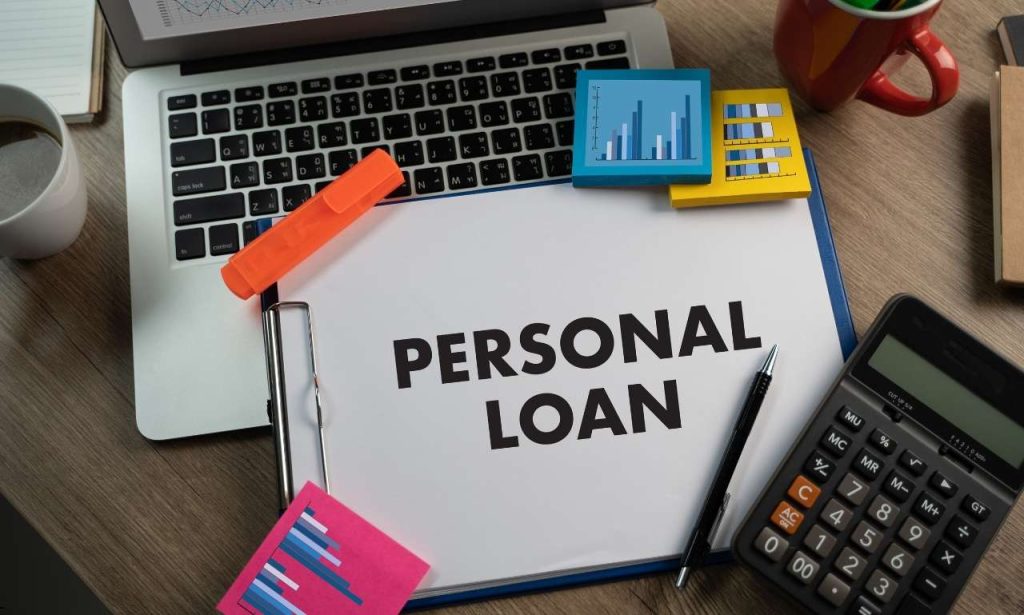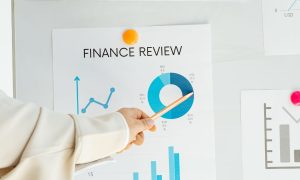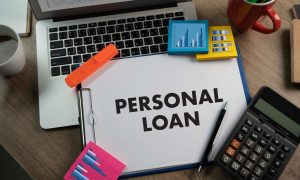Credit card debt can feel like a never-ending cycle. High interest rates, minimum payments, and constant reminders can drain your peace of mind. Many people wonder whether a personal loan could be the lifeline they need. The idea sounds simple: take out one loan, pay off all your cards, and then repay that single loan each month.
But is it really that easy? The truth depends on your financial habits, credit score, and goals. A personal loan can simplify your finances, but it can also add risk if used incorrectly. Before you jump in, let’s unpack the potential advantages and disadvantages. This guide will help you decide whether getting a personal loan to pay off credit card debt is the right move for you.
Benefits of Using a Personal Loan to Pay Off Credit Card Debt

Before applying for a personal loan, it helps to understand what makes it appealing. Personal loans often come with structured terms, predictable payments, and potentially lower rates than most credit cards. Below are the key benefits.
Lower Interest Rate
Credit cards often charge double-digit interest rates. Some can reach as high as 25% or more. Personal loans, on the other hand, usually come with lower fixed rates. That difference can save you hundreds—or even thousands—over time.
A lower rate means more of your payment goes toward principal instead of interest. It’s like running downhill rather than climbing up. However, your credit score plays a big role. Borrowers with excellent credit tend to qualify for the best terms. If your credit isn’t strong, your rate may not improve much, and the benefit shrinks.
Lower Monthly Payments
Another major draw of personal loans is potentially smaller monthly payments. By extending repayment over several years, your monthly cost can drop significantly. That breathing room can reduce financial stress and make it easier to stay on top of bills.
Still, there’s a trade-off. Paying less each month often means paying more overall, since the loan lasts longer. It’s important to calculate the total cost before deciding. Sometimes, what feels affordable now can become expensive later.
Streamlined Monthly Payments
Managing multiple credit cards is messy. Each has its own balance, due date, and interest rate. Missing a single payment can hurt your credit score and trigger penalties. A personal loan can simplify everything into one fixed monthly bill. It’s easier to budget and harder to forget.
For many, this alone makes the switch worth it. Simplicity reduces errors and helps you stay organized. Think of it as financial decluttering—you keep one clean account instead of juggling several chaotic ones.
May Help Your Credit
Surprisingly, consolidating debt with a personal loan can help your credit over time. When you pay off credit cards, your utilization ratio—the percentage of available credit you’re using—drops. A lower ratio can boost your credit score.
Additionally, making consistent on-time payments on your new loan shows lenders that you’re reliable. Over months of steady repayment, your score can climb. However, if you continue using your credit cards after paying them off, you could undo those gains fast.
Drawbacks of Using a Personal Loan to Pay Off Credit Card Debt
No financial solution is perfect. Personal loans can bring relief, but they also come with strings attached. Let’s look at the risks and downsides.
Upfront Fees
Most personal loans include origination fees. These fees usually range between 1% and 8% of the total loan amount. They’re either deducted from your loan proceeds or added to your balance. That means you’ll receive less money than expected—or owe more than planned.
Before agreeing to any loan, read the fine print. Some lenders advertise low interest rates but offset them with steep fees. Always compare the annual percentage rate (APR), not just the base interest rate. The APR includes fees and gives a clearer picture of the true cost.
No Guaranteed Loan Amount or APR
It’s easy to assume you’ll qualify for the amount you need at the rate you want. But lenders evaluate multiple factors—your income, credit history, and debt-to-income ratio. If your credit profile isn’t strong, you might get a smaller loan or a higher rate. In some cases, you may not qualify at all.
This uncertainty makes planning tricky. You might apply expecting a 10% APR and get approved at 20%. That shift could wipe out the benefit of consolidating. Always shop around and pre-qualify with several lenders before committing.
Could Lead to More Debt
This is the biggest hidden danger. Once your credit cards show a zero balance, it can be tempting to use them again. Suddenly, you have both a personal loan and new card balances. That double debt can spiral fast.
Financial discipline is critical here. If you tend to overspend, locking away your cards or closing some accounts may help. A personal loan works best when paired with behavior changes—not as a quick fix for poor habits.
Should You Pay Off Credit Card Debt With a Personal Loan?
The answer isn’t one-size-fits-all. For some people, it’s a smart financial move. For others, it’s just a temporary bandage. You should consider your income stability, credit score, and ability to stick to a repayment plan. Ask yourself these questions:
- Can I qualify for a lower rate than my credit cards?
- Will I commit to not using my cards again?
- Can I afford consistent payments over several years?
If the answer to all three is yes, a personal loan might make sense. If not, you might explore other strategies first.
When a Personal Loan Could Make Sense
A personal loan can be practical in specific situations. If you have strong credit, steady income, and high-interest card balances, the math may work in your favor. Suppose you’re paying 22% interest on several cards. Replacing that with a 10% fixed loan could save a large amount.
It also makes sense when you want a clear payoff timeline. Credit cards can linger for decades if you only pay the minimum. A personal loan comes with a definite end date, giving you structure and motivation. Just ensure your repayment fits comfortably within your monthly budget.
Find a Personal Loan Matched for You
The personal loan market is vast. Banks, credit unions, and online lenders all compete for borrowers. Instead of applying randomly, use pre-qualification tools. These let you see potential offers without harming your credit score.
When comparing, look at more than the interest rate. Check loan terms, fees, and repayment flexibility. Some lenders offer hardship options or early repayment without penalties. Those features can protect you if life throws surprises your way.
How to Get a Personal Loan
Applying for a personal loan is straightforward, but preparation helps. Here’s a step-by-step overview.
Start by checking your credit score. Many free services provide this information instantly. A higher score can unlock better terms. Next, gather documents such as proof of income, identification, and existing debt statements. Lenders use these to verify your financial health.
Then, compare multiple lenders online. Don’t rush—rates vary widely. Once you find a favorable option, submit a full application. If approved, review the loan agreement carefully before signing. The funds typically arrive within a few days. Use them immediately to pay off your credit card balances. That’s the key—don’t let the money sit around or tempt new spending.
Alternatives to Using a Personal Loan to Pay Off Credit Card Debt
A personal loan isn’t the only tool available. Depending on your situation, other methods might suit you better.
Balance Transfer Credit Card
Some credit cards offer balance transfer promotions with low or 0% interest for an introductory period. These can provide breathing space to pay down debt faster. However, the low rate is temporary. Once it expires, the interest can skyrocket.
If you choose this route, aim to pay off as much as possible before the promotional period ends. Also, note that most transfers include a small fee, typically around 3% of the amount moved.
Debt Payoff Methods
Another approach is tackling debt systematically without new loans. Two common methods are the snowball and avalanche techniques. The snowball method focuses on paying off the smallest balance first for quick wins. The avalanche method targets the highest-interest balance first for maximum savings.
Both require discipline and consistency but cost nothing extra. Many people find satisfaction in seeing one balance disappear at a time. It builds momentum and motivation.
Borrowing From Family or Friends
In some cases, borrowing from a trusted loved one can work. The benefit is often a lower or even zero interest rate. But mixing money and relationships is tricky. Miscommunication or missed payments can cause tension or long-term rifts.
If you choose this path, treat it like a business deal. Write down terms, repayment dates, and expectations. Clear agreements preserve both your finances and your friendships.
Conclusion
So, should you get a personal loan to pay off your credit card? The answer depends on your discipline, credit score, and long-term goals. A personal loan can reduce interest costs, simplify payments, and help rebuild your credit. But it’s not a magic solution.
If you’re committed to staying debt-free and ready to change spending habits, it can be a smart move. If not, it might just shift the problem elsewhere. Always compare options, read the fine print, and think long-term. Debt freedom requires more than financial tools—it demands mindset shifts and steady progress.
Take a breath, look at your numbers, and choose wisely. Your financial future depends on today’s decision.
Also Read: 7 Cheapest Salary Systems Of 2024
FAQs
It can be smart if the loan offers a lower rate and you stop using your cards afterward.
Yes, it can improve if you make on-time payments and reduce credit utilization.
Yes. You may pay fees, and poor discipline could lead to more debt.
Most lenders approve and fund loans within a few days, depending on verification.



